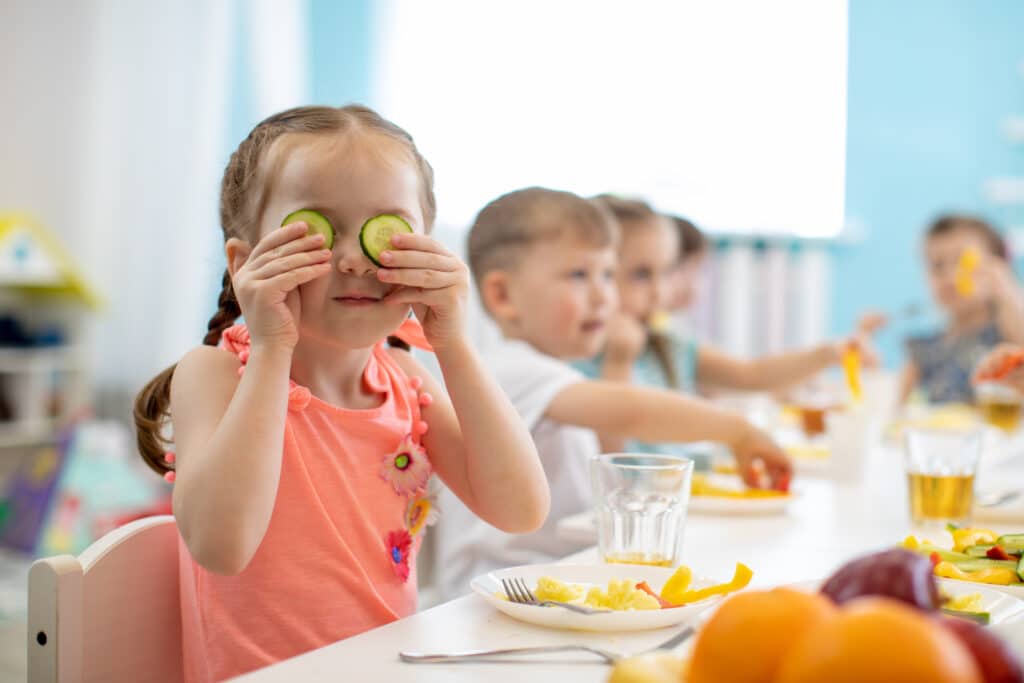When parents look at which childcare to send their child to, they’ll evaluate the health, safety and nutrition that the center provides. Children who grow up with good nutrition, health and are safe have tools to support brain development and learning and have brighter futures.
Learn how you can support parents in their quest to provide for their children’s total wellbeing and why it matters.
Why Childhood Health, Safety and Nutrition Is So Important
When children are willing to eat dirt and drink bathwater, it might seem silly to say that early childhood health is essential. But how healthy a child is will dictate their lifelong health, education, job prospects and contributions to society.
To grow up to become healthy adults, children must be in excellent health from a young age and build healthy habits. This includes exercise and nutritious food. That’s not to say that children should diet or participate in routines like intermittent fasting like adults do because these habits could lead to health problems for young children.
Nutrition also is an essential element to development. It supports brain development, builds immunity and helps increase a child’s cognitive functioning and activity levels. And the better children eat, the less illness you’ll deal with in your childcare center.
Just like health, children need a safe environment that prevents injuries. Young children don’t have the reasoning skills yet to recognize dangerous environments or risks. Yet, it’s good for children to have an environment where they can freely roam and explore to learn about the world.
That’s why parents and caregivers must look out for children and build safe play environments. And responsible adults should explain to children what is safe and what isn’t to help train them.
5 Tips for Creating a Healthy, Safe, Nutritious Environment for Young Children
Now you know why health, safety and nutrition matter for young children. The next step is creating a good environment for children. You can do that in a variety of ways.
- Promote Health
Teach children healthy habits to avoid sharing germs and experiencing outbreaks of common childhood illnesses within your center. Educate children about how to wash their hands effectively and encourage parents to carry this training over into their homes. Encourage parents to get their children the recommended immunizations and vaccines, when appropriate. That way you avoid severe illnesses.
- Create a Safe Play Environment
Play provides opportunities for children to explore and learn. When children are having fun, they might push their limits and face unsafe conditions. It is the job of the childcare to create a safe environment where children can freely explore.
Remove all safety hazards and train children how to avoid common injuries from mistakes like falling. Explain the dangers of getting too aggressive on playground equipment and remove children who are struggling to control their emotions.
- Supervise Children Constantly
Children need regular supervision. Caregivers should observe and listen to children at all times. Encourage parents to lock down digital devices at home and ensure all digital tools within your childcare center are locked down as well.
- Encourage Safety Habits
Ultimately, many safety habits will fall on parents to enforce. But you can start the conversation within your childcare center to help children stay safe. And bringing in guest visitors, such as zoo animals or police officers can help the lessons come to life. Some safety habits to discuss with children include:
- Never chase wild animals or disrupt their normal routines. Don’t mess with their babies or antagonize them in any way.
- Always wear a seatbelt when riding in a vehicle.
- Before biking, skating, snowboarding or skiing, put on a helmet and strap the chin strap snuggly.
- Never swim alone, no matter how good your swim skills are.
- Teach children how and when to call 911.
- Be cautious around strangers and teach children some common reasons to find another adult for help.
- Ask for help if you’re lost. Teach children how to find another family with young children or law enforcement to ensure they are speaking with a safe adult.
- Don’t play near vehicles, even if they are in your own driveway because they could be dangerous.
- Teach Children Healthy Nutrition
Children need a variety of nutrients to help them grow up strong. Some important elements of a healthy diet for children include the following.
- Calcium: this helps build strong bones. Some foods rich in calcium include dairy products and seeds.
- Protein: muscles require protein. Some good sources of protein include meat, cheese, eggs, legumes and fish.
- Carbohydrates: energy requires carbs. Look for natural occurring carbs though, not food laden with added sugar. Some healthy carb sources include apples, whole grains and potatoes.
- Iron: for blood health, children need iron. Great sources of iron include spinach, grains and legumes.
- Essential fats: these are important for brain health and vitamin absorption. Good sources of healthy fats include nuts, avocados and fish.
Teaching children about the values of various foods can help them prioritize these foods that help them grow and develop. Sending materials home to parents can also encourage children to apply what they’ve learned at home.
Tracking Health and Developmental Milestones in Childcare Centers
With so many elements of creating a healthy, safe and nutritious environment for young children to grow and develop, having the right tools can make all the difference. Childcare software offers tools for evaluating children’s wellbeing at check-in with symptom and temperature checks, tools for tracking developmental milestones and a variety of other tools that help teachers communicate with parents and create a good environment for children. Schedule a demo of iCare Software to learn about one of the leading US-based childcare software systems.

